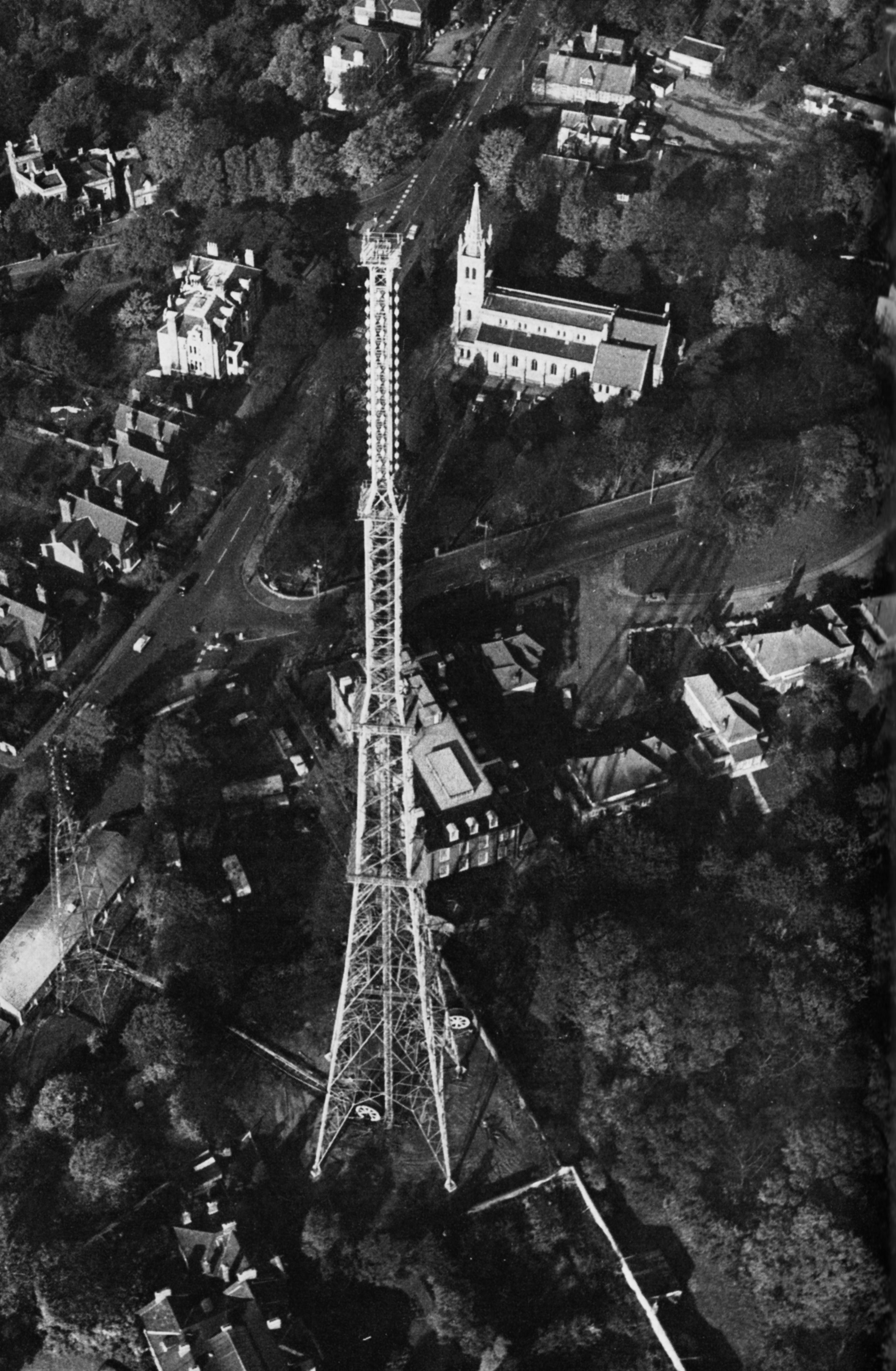
Early in 1963 the Independent Television Authority owns and operates 22 transmitting stations, providing programmes for 96 per cent of the whole population of the United Kingdom. Eighteen of these stations have a full engineering staff; two are semi-manned and two are unmanned satellite stations.
The eighteen fully-manned stations are each equipped with two similar sets of transmitters, each set composed of one vision and one sound unit. Depending upon the power required to be fed to the aerials, all four transmitters may be worked with the vision and the sound pairs in parallel, or one vision and one sound transmitter only. The station equipment includes apparatus for the generation of vision and sound signals for test purposes, and four stations have telecine to provide emergency programmes. The transmitters are connected to studio centres by a network of vision and sound links.
The satellite stations receive programmes on one channel from a “parent” station which, after amplification, are re-radiated on another channel; they are supervised and controlled by the “parent” station.
Vision and Sound Network
A network of vision and sound circuits provides the links between the various ITV areas and between the studio centres and the ITA’s transmitters. This network is rented by the Authority from the General Post Office. The vision circuit totals about 3,100 miles, about half of which is built up of microwave radio systems and half by underground coaxial cables.
To ensure high quality transmission the circuits frequently have a band width equivalent to that required for about 700 simultaneous telephone conversations.
To carry signals to the more remote transmitting stations and to meet short-notice requirements, the Authority has itself installed a number of microwave links which are fed by an “off air” signal received from another transmitter.
ITV’s Technical Development
Independent Television programmes are produced and presented from more than sixty studios in centres at London, Manchester, Birmingham, Glasgow, Belfast, Cardiff, Bristol, Southampton, Dover, Newcastle, Carlisle, Aberdeen, Norwich, Plymouth and the Channel Islands. The total working floor area of these studios is over 170,000 sq. ft., ranging in size up to 14,000 sq. ft. A complex array of technical equipment, cameras, lighting and sound systems is brought into operation by highly skilled staffs. Details of a few of the many technical advances made by the Independent Television programme companies are contained in pages 16-47.
The ITA and the programme companies participate in major national and international conferences on technical aspects of television. As members of the European Broadcasting Union, they are in regular contact with the broadcasting organisations of other countries and, wherever possible, render assistance and advice.
The programmes produced by a combination of artistic and technical skills in the studios are fed to the ITAs stations in the form of television signals. The operation of the stations which transmit the signals to viewers is described in. the pages that follow.
